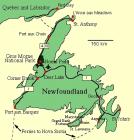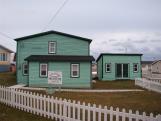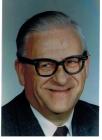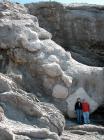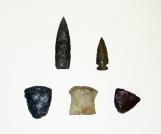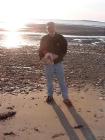1
''Taking Pride In Our Past'' Conservation and Heritage Committee Dr. Henry N. Payne Community Museum1880
Cow Head Summerside

3
Cow HeadLocated on the West Coast of the Great Northern Peninsula, Cow Head has been called by many names. It was first named Cap de Pointe by Jacques Cartier on June 16, 1534. However, the French renamed it "Tete de Vache". It has also been called Cape Pointu, Cow Harbour, Cow Cove, Tuckers Cove, the Head, Summerside, Winterside, Shallow Bay or we may sum them all up and say Cow Head.
Traditionally divided into two parts, Winterside or the "main" and Summerside or the "head",the division reflects the two locations where early settlers resided depending on the season.
This exhibit will tell the story of the early people of Cow Head centering around the social life of church, school and the family, and the development of its society through images and documentation, focusing mainly from the early to mid 20th century.
5
Our MuseumCow Head is home to the longest running museum on the West Coast of Newfoundland. It started in 1975 as the Tete de Vache Museum. Over the years the museum made several moves and in the early 1990's the Cow Head Conservation and Heritage Committee decided to find a "resting place" for the museum artifacts.
In 1999 the museum opened under a new name, the Dr. Henry N.Payne Community Museum.
It was named after a prominent community leader whose family very generously donated the house to be used as a community museum. Their only request was that the museum take his name.
7
Dr. Henry N. Payne 1906-1986Born in Cow Head June 28, 1906 to William Wallace and Hannah Maria Brake, Henry was one of nine children. Mr. Payne accumulated 45 years of faithful service to the teaching profession. He was very active in the community and served as a layreader in the Anglican Church for sixty years, Justice of the Peace, field worker for the co-operative movement, member of the library board, parish council, local improvement board and executive member of the St. Barbe South Integrated School Board. Receiving many awards and certificates his crowning achievement occurred in 1975 when he was awarded an honorary Doctor of Laws from Memorial University of Newfoundland.
11
500 Million Years AgoAround the Cow Head Peninsula layers of limestone conglomerate form the coastline. Pieces of shallow water limestone tumbled from the edge of the carbonate bank that formed along the continental shelf about 500 million years ago.
When underwater landslides occurred the limestone later hardened into a natural concrete called "breccia". The limestone chunks found on "The Head" are often several meters across and are blanketed by layers of fine mud which have solidified into black shale.
The Cow Head breccias are important for their large size and thickness and for the fossils contained within them. Here geologists can compare shallow-water organisms and deep- water organisms. These organisms tell what life forms were present and the age of the strata. They also provide information about their depositional environment. They provide one of the best opportunities in the world for learning about the different marine environments of that time.
13
AND THEY CAME BEFORE US!During excavations led by James Tulk in the mid 1970's archaeological excavations were uncovered to reveal that Europeans were indeed not the first people to visit Cow Head.
From the sites uncovered, more than two thousand artifacts were removed and taken to St. John's for further study and preservation. These sites contain artifacts from Maritime Archaic, Groswater Paleo and Recent Indian. It is now believed these artifacts date back 2300-4500 years ago and that these people may have came to Cow Head to quarry the Chert.
Chert is a hard glassly rock formed by the precipitation of silica in deep water and was used by the native people to make their tools.
Maybe Cow Head was used as a stopover to gather chert and make their tools as Cow Head chert has been found in other archaeological sites as far north as Labrador. Cow Head chert was probably used because of its very high quality.
